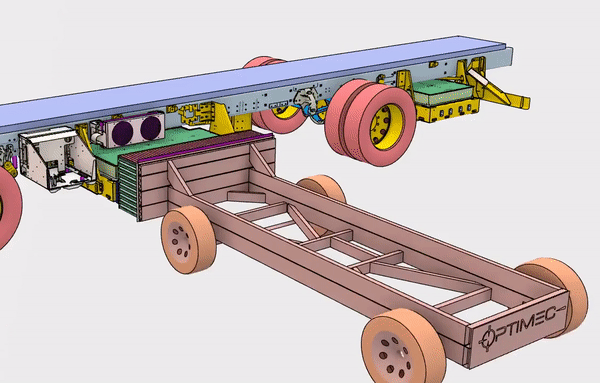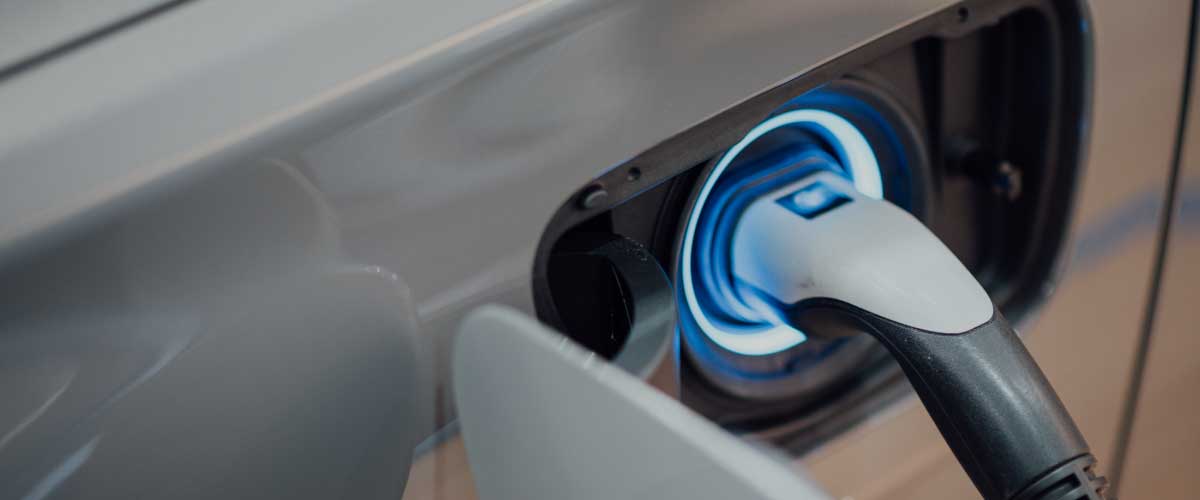The electrification of mobility is on the move. Manufacturers are stepping up their efforts to market competitive, reliable, all-electric models: some by integrating batteries and electric motors onto an existing chassis; others by designing completely new structures.
 In the first approach, a structure designed for a combustion engine must be adapted to accommodate a completely different (electric) system. One must determine where to position the batteries and design the supports to attach them to the structure.
In the first approach, a structure designed for a combustion engine must be adapted to accommodate a completely different (electric) system. One must determine where to position the batteries and design the supports to attach them to the structure.
The second approach involves all the challenges inherent in the design of a new platform, while the opportunities for innovation and optimization are reinforced by the need to reduce the weight of the vehicle and by significant market competition.
No matter the approach, the use of finite element analysis (FEA) allows for more successful integration of a battery system into an electric vehicle. Let’s explore how FEA can help successfully implement electric mobility projects.
Include FEA at the earliest stage of designing a new electric vehicle.
Weight is the main enemy in designing for electric mobility.
We often see FEA implemented only once the design has reached an advanced stage, at which point improvements and optimization require costly changes involving several systems and many people. FEA should be used early on to help create better designs from inception, rather than implementing it as a validation tool late in the process.
A topological optimization using Tosca/Structure software can help develop a preliminary concept that will maximize rigidity while keeping mass and other constraints within specified parameters. Such efforts will result in a lighter and better-designed piece of work.

Attaching batteries securely, but not overdoing it…
In case of impact, the battery must remain attached to the structure and must not become a projectile. However, there are also limits to the acceleration that the battery can withstand before there’s a risk of damage. Thus, the supports connecting the batteries to the structure must be designed with a balance between rigidity and damping. FEA is the best ally to achieve this balance.
Dynamic impact analysis with the Abaqus/Explicit solver allows us to predict how the battery supports will deform, to evaluate their level of plasticity, and to measure the force of acceleration on the batteries along with other industry standard tests. FEA can be used reproduce the FMVSS standardized tests of the NATIONAL HIGHWAY TRAFFIC SAFETY ADMINISTRATION, NHTSA.
A frontal impact on a rigid wall, a side impact on a deformable barrier and a rear impact on a rigid barrier are all certification steps during which the integrity of the batteries will be assessed. The monetary and environmental cost of these tests is high since each requires an entire vehicle to be dedicated to it. FEA expertise allows companies to successfully model and simulate these tests with a greater number of iterations for a significantly lower cost and lesser environmental impact.
Reducing the Risk of Thermal Runaway in LI-ION Batteries in electric vehicles with FEA
Thermal runaway in Lithium-Ion batteries is a well-known risk, as detailed in the article by Lion Smart. The deployment of an efficient cooling system to prevent overheating helps reduce this risk. Computational Fluid Dynamic (CFD) analysis using software such as MSC Cradle, XFlow/PowerFlow, or Abaqus/Fluid provides valuable assistance in sizing these essential systems.
Short-circuiting is another source of thermal runaway. An object penetrating a battery module or the crushing of a high-voltage connector during an impact can create a short circuit causing a thermal runaway which can lead to a fire. FEA makes it possible to prevent these risks, by providing detailed modeling of the battery, including the high-voltage connectors.

FEA as a tool to reduce the environmental footprint of new electric vehicles
To consume intelligently, we must design and build intelligently. The environmental impact of bringing an electric vehicle to market is greater than it is for a combustion vehicle, due to the metals used in the batteries, as well as the additional tests that electric vehicles must pass before being put on the market. Electric vehicles are generally heavier than their combustion equivalents and will therefore require more energy to move.
FEA allows businesses to run accurate simulations and reduce the number of trial-and-error prototypes required in the test phase thanks to a better prediction of the behavior of the vehicle. Increased confidence in advanced numerical models and optimization tools helps designers to reduce the structure’s mass. These enhancements result in a significant reduction in the environmental footprint.
Additionally, FEA simulation makes it possible to identify potential stress concentrations that can lead to the appearance of fatigue cracks and to correct the design upstream, thus extending the life of the electric vehicle.
By optimizing the rigidity of the battery supports, reducing the mass of the structure, improving the efficiency of the cooling system, and simulating impacts, finite element analysis (FEA and CFD) is the best ally for electric mobility design and manufacturing.
Curious to know how our expertise in FEA could help you? Contact us today.


